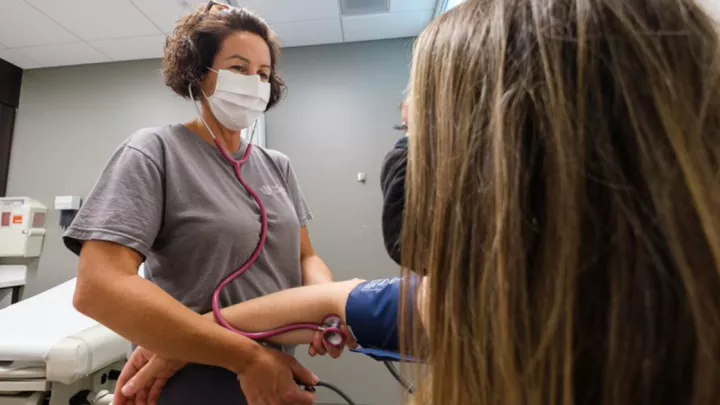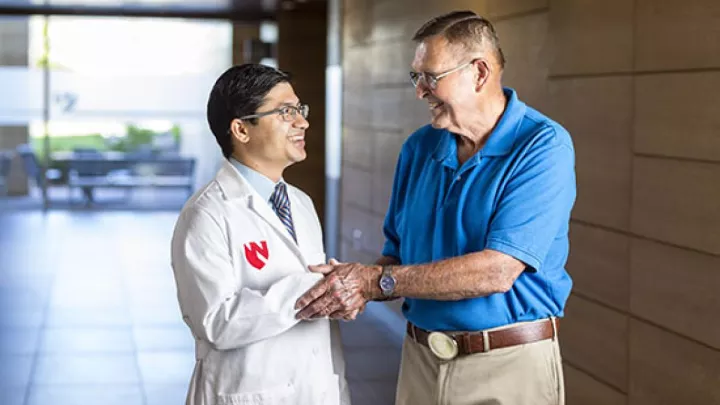Rashes, bruises and fatigue: Could it be leukemia?

There are no telltale signs of leukemia, a cancer of the blood cells. You have three main types of blood cells: white ones that fight infections, red ones that carry oxygen and platelets that form clots when injured. Leukemia can affect all of these.
“Some people who develop leukemia will have no symptoms and for those that have symptoms, they tend to be vague and difficult to pinpoint,” says Vijaya Bhatt, MBBS, Nebraska Medicine hematologist and medical oncologist.
Most common symptoms of leukemia
When leukemia affects the red blood cells, you may feel fatigued, become pale and short of breath and develop anemia, explains Dr. Bhatt. If your white blood cells are low, you lose the ability to fight infections and get sick more often. When the platelets are involved, this affects your clotting ability and will result in bruising and bleeding more easily.
As the disease progresses, you may also get develop chills and fever. You may get nosebleeds and small red spots on your skin that look like raised red and purple speckles. Your gums may become swollen or bleed. You may also notice weight loss and achy joints and bones.
Prevalence of leukemia
The number of new cases of leukemia diagnosed in the United States each year is about 14 per 100,000 men and women or 61,000 new cases each year, according to the National Cancer Institute. It ranks as the 10th most common cancer in the U.S.
Leukemia can be acute or chronic. Leukemia is more common in older people in their 60s and above. Acute leukemia can develop in a matter of weeks. Acute myelogenous leukemia (AML) is the most common acute type in adults. Acute lymphocytic leukemia is common in children and younger adults.
The most common form of non-acute leukemia is chronic lymphocytic leukemia (CLL). Chronic myelologenous leukemia (CML) is less common.
How to diagnose leukemia
If you develop any of the symptoms discussed above that don’t go away after a few days or symptoms get worse, you should be evaluated by your physician, Dr. Bhatt says. If your doctor suspects leukemia, they will order a complete blood count, which will provide a count of each blood cell. If any of your blood counts are off, a diagnosis can be confirmed with a bone marrow biopsy. You may also undergo a CT or MRI to look for cancer in your lymph nodes and organs.
Treatments for leukemia
The standard treatment for acute leukemia is chemotherapy. If chemotherapy fails, or for certain subtypes of acute leukemia, a stem cell transplant may also be an option. A stem cell transplant involves receiving healthy stem cells from a donor. Chronic leukemia is usually treated with newer therapies that attack the cancer cells.
Unfortunately, there are no routine screening tests to diagnose leukemia early, says Dr. Bhatt. In most cases, there are no clear risk factors. Older adults are at a higher risk of developing leukemia. You do have a slightly higher risk if a family member has had it. Exposure to chemicals like benzene that is found in crude oil, rubber, and dye, smoking cigarettes and exposure to chemotherapy or radiation can raise your risk.
Call 800.922.0000 to schedule an appointment with one of our health care providers.






